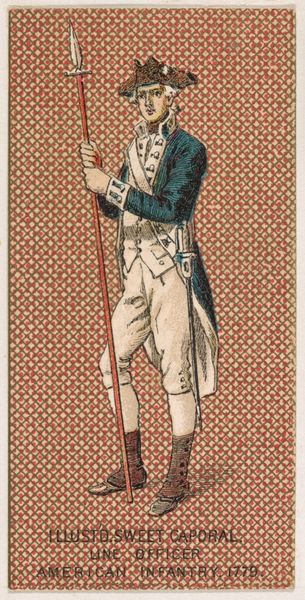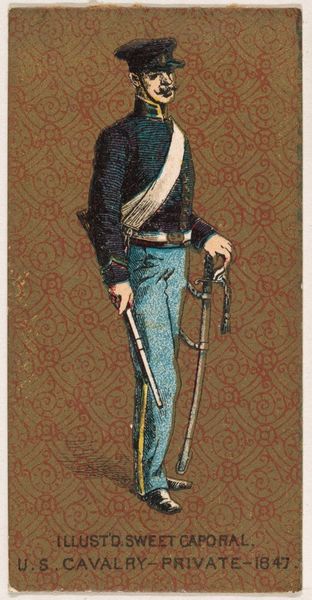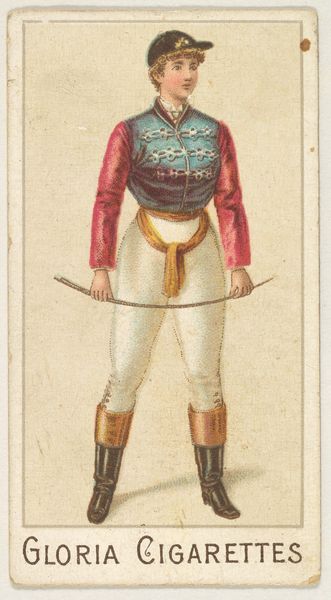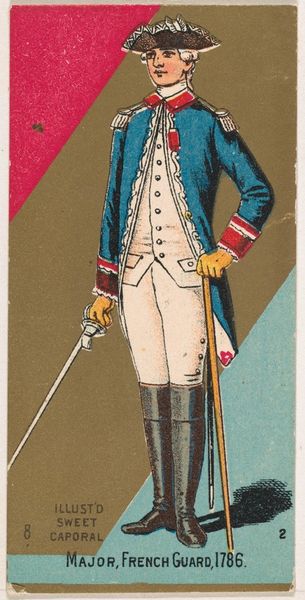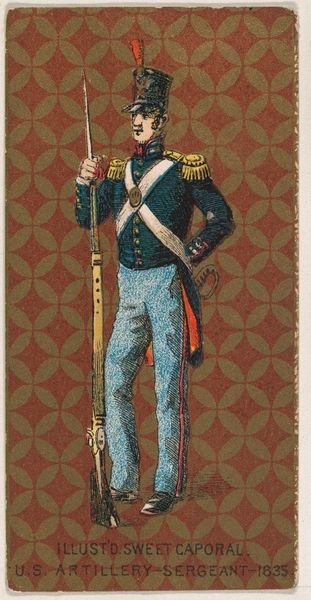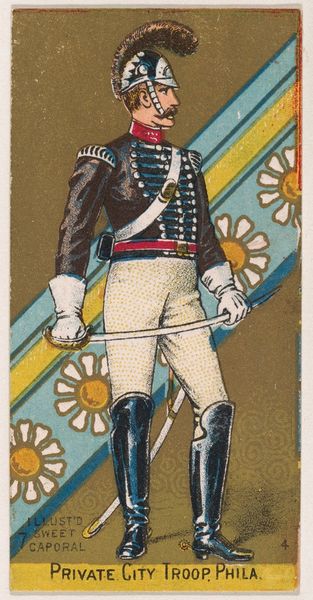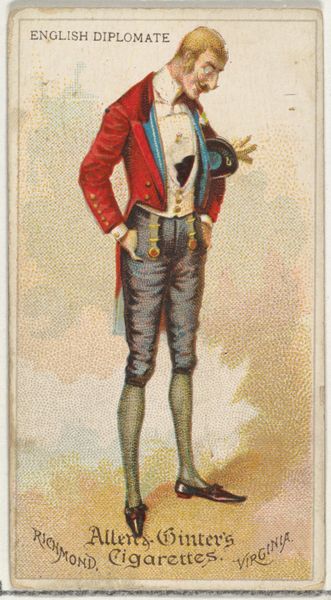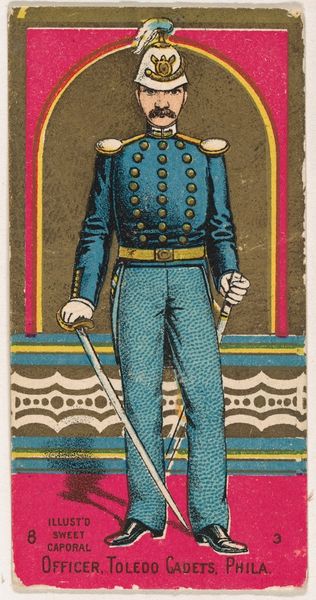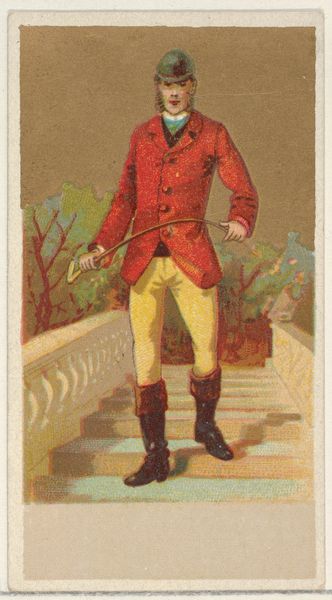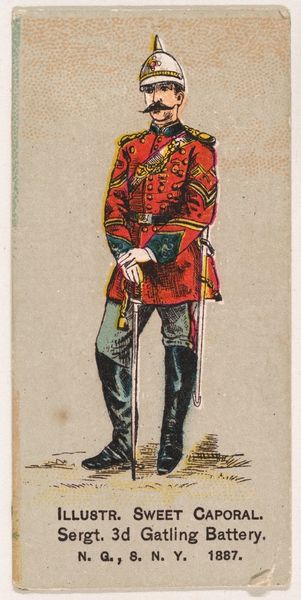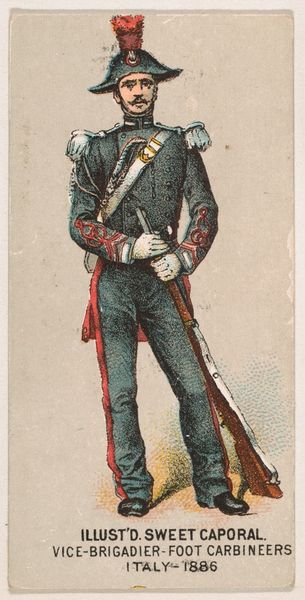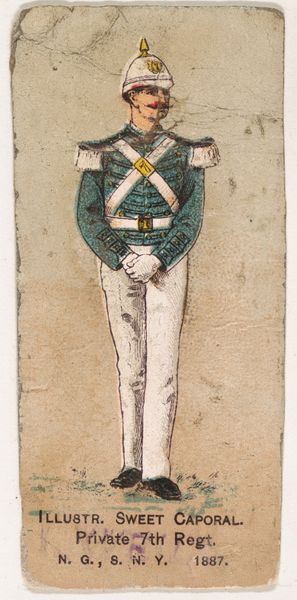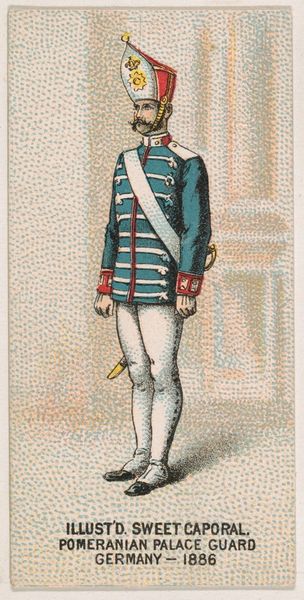
General Officer, United States Army, 1813, from the Military Series (N224) issued by Kinney Tobacco Company to promote Sweet Caporal Cigarettes 1888
0:00
0:00
drawing, print
#
portrait
#
drawing
# print
#
history-painting
#
academic-art
Dimensions: Sheet: 2 3/4 × 1 1/2 in. (7 × 3.8 cm)
Copyright: Public Domain
Curator: Let's turn our attention to a card from the Military Series, created around 1888 by the Kinney Tobacco Company. It's part of a set used to promote Sweet Caporal Cigarettes and is now housed at the Metropolitan Museum of Art. The artwork depicts a General Officer of the United States Army in 1813. Editor: Well, my first impression is how remarkably poised he is! The composition, the detail in his uniform, there's a remarkable control present in his stance and his gaze, what can you tell me of the sociohistorical context behind these trading cards? Curator: Absolutely. These cards offer a glimpse into late 19th-century cultural values and the popular fascination with military figures. After the Civil War, representations of American military leaders served as symbols of national pride. Note the tension, though: these images promoted leisure products, suggesting a complex relationship between consumer culture and military honor. Editor: The colour choices seem quite purposeful. The stark contrast between his white trousers and dark boots, set against the detailed gold pattern on the card’s face really pulls focus and divides the subjects form from background Curator: I think those strong contrasts definitely work as assertions of power. But to view them now, we also have to think about the untold narratives surrounding military power: Whose voices are centered, and whose stories remain in the margins? The visual language of power must also be a question for all of us. Editor: An excellent point to ponder as we examine art. What begins as mere enjoyment soon matures as civic engagement. Curator: Yes, reflecting on whose experiences are valorized is paramount. A print like this may speak of patriotic fervor but also prompts conversations about who gets represented in those grand narratives. Editor: On the one hand we find the composition so clean, structured, almost formalist! Then on the other, we find meaning in the complex network of power relations so characteristic of our history. Wonderful insights as always.
Comments
No comments
Be the first to comment and join the conversation on the ultimate creative platform.

